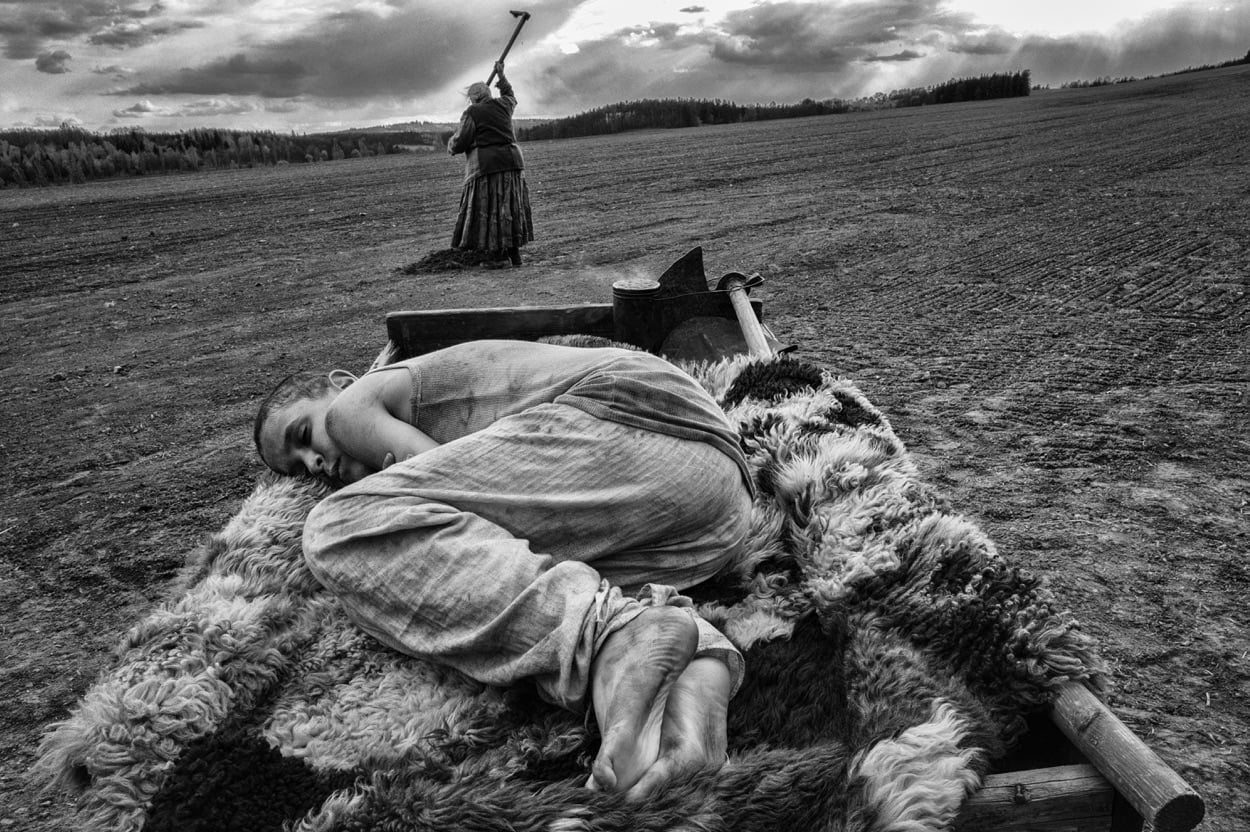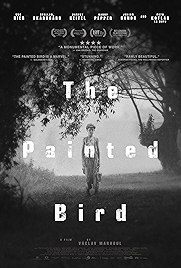A screen adaptation of Polish-born Jerzy Kosiński’s novel The Painted Bird probably should have been made before 2019. “Of all the remarkable fiction that emerged from World War II, nothing stands higher than Jerzy Kosiński’s The Painted Bird,” wrote Jonathan Yardley in The Miami Herald in a typical rave when the book first appeared in 1965. When it turned out that the book wasn’t based on Kosiński’s own personal experiences, as he had claimed, and that he’d pulled off a remarkable literary hoax, sentiment reversed sharply.
Decades later there were claims that other books by Kosiński – like Being There (which was turned into a 1979 film starring Peter Sellers) – were largely works of plagiarism lifted from Polish novels unknown in the English-speaking world. And there were suggestions that Kosiński’s assistants did all the writing while Kosiński himself dined out on his literary reputation.
Does any of that matter? Ultimately, no, and writer/director Václav Marhoul in any case meets the troubling “plagiarism/fabrication” aspect of Kosiński’s work head-on by deliberately doing something similar and styling his adaptation of The Painted Bird on another film, Elem Klimov’s 1985 anti-war magnum opus Come and See. There’s even a role for the boy-star of Come and See, Aleksei Kravchenko.
Both films have the same picaresque structure and follow a young lad as he stumbles around Eastern Europe from one grim situation to another. This is an almost unrelentingly brutal film, introducing us to its hero, Joska (Petr Kotlár) in an opening scene in which his pet (a weasel? stoat?) is burned before his eyes. Within minutes Joska’s grandmother is also dead, and her house is roaring in flames. Homeless, Joska is off on his tour of hell.
The “painted bird”, we learn, is the one that stands out from the other birds and for its affrontery is pecked to death by its fellows. Joska, we’re told a couple of times, though it’s unclear how anyone can know this, is Jewish, and since vicious anti-semitism is a fact of life he keeps this part of his identity tightly under wraps.
Because it was shot chronologically over two years, we actually see Joska grow up as he moves from one “refuge” to another – a travelling wise woman/doctor (Alla Sokolova), a miller (Udo Kier), a peasant couple (Lech Dyblik and Jitka Cvankarová), a German soldier (Stellan Skarsgård), a priest (Harvey Keitel), one of the priest’s parishioners (Julian Sands), a peasant woman (Julia Valentova) and eventually an American soldier (Barry Pepper). Along the way he is buried up to his neck and almost has his eyes pecked out by crows, is raped by a man, then by a woman, beaten, thrown in a cesspit, while around him one character has been eaten alive in a grain store boiling with hungry rats, and another has had a bottle inserted into her vagina, which the local women have kicked at till it shatters.
The more famous names, Keitel for example, slot right in with the less well known, all of a piece in this unfolding tableau of awfulness. It’s The Good Soldier Schwejk without the jokes, perhaps, all shot in an arresting black and white by much-garlanded Czech cinematographer Vladimír Smutný, and one of the ancillary cultural points it makes is just how medieval Eastern Europe was in the run-up to the Second World War. Until a German bi-plane buzzed over Joska as if from nowhere, I’d got little idea which century we were in, never mind which decade of the 20th century.
In spite of the “one damn thing after another” plotlessness of the picaresque,The Painted Bird remains gripping until minutes before the end. It gets round the tendency of the picaresque to flop into formlessness by driving forward at a real lick, yet also finds enough space to luxuriate in moments of unexpected beauty.
It’s only the third film that Marhoul has directed, and he was almost 60 when this was released. I don’t know his other films, 2003’s Smart Philip or 2008’s Tobruk, but the first is apparently an adaptation of one of Raymond Chandler’s Philip Marlowe stories, while the second shifts Stephen Crane’s Civil War drama The Red Badge of Courage (a version of which became a film starring Audie Murphy) into North Africa. This excellent adaptation of Kosiński’s problematical book is no one-off then. Marhoul clearly likes a challenge.
The Painted Bird – Watch it/buy it at Amazon
I am an Amazon affiliate
© Steve Morrissey 2021


